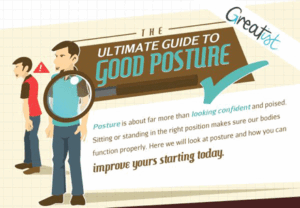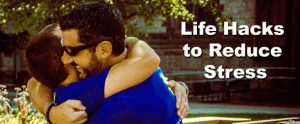These are the Days of 10,000 Maniac’s
No, not Natalie Merchant’s 10,000 Maniacs. We mean the Japanese version. Everywhere you look these days, we are being told to ‘get your steps’ or ‘I need to get my step up’. Now, I’m the first to preach that as a society who is dealing with pain and obesity epidemics, we all need to move more. Simply moving more can alleviate a myriad of physical disorders and complaints that come through our doors. As technology has evolved, we have become a society that is more dependent on communication via text or email, rather than a physical interaction with someone who may be in the next cube or a friend who may live around the corner.
I won’t preach that lack of movement is the only culprit to our decline in overall health that leads to major health issues, but it is indeed a factor, that if addressed realistically, can help many people towards a better health.
Enter the advertising executives who saw an opportunity in a market segment; you. 10,000 steps have become a mantra now and people think that simply receiving a notification on their wrist is an indication that they are being healthy. Wrong! For starters, who determined that 10,000 steps were the magical number of steps we needed to be “well”? The concept originated in the 1960s with a Japanese manufacturer of a pedometer called manpo-kei, which translates to “10,000 steps meter.” It’s thought that the number 10,000 was chosen because of its exalted status in Japanese culture, not necessarily because it’s a golden number for health. This is not exactly a reason for millions of people to be maniacs about their steps.
Research tell us that less than 5000 steps a day is considered sedentary. An additional 3000 steps for a total of 8000 steps, is the true target to be considered ‘somewhat active’. However, the additional 3000 steps should ALSO be done at a pace of 100 steps per minute (fast walk or slow jog) in increments of at least 10 minutes at a time. In other words, achieving your target of 10,000 or even 8,000 steps by walking around your living room as you brush your teeth before bed doesn’t cut the mustard, yet you will see that many 10K maniac step club members do this for the sake of a team goal or even self-gratification. Don’t even get me started on the accuracy of these pedometers. There are numerous studies showing just how unreliable the data can be from these devices.
The gold standard for maintaining good health has not changed in over 30 years. 150 minutes of moderate activity each week (30 minutes a day) coupled with two or more days of muscle-strengthening activity, is what the Center for Disease Control (CDC) continues to recommend. There are plenty of fitness apps at our disposal to monitor and track our success, but I can assure you that if you are following the gold standard, you won’t need a vibrating watch to tell you that you are taking care of yourself.
Bottom line is this, technology can be both good and evil. When it comes to your own health, should you rely on a watch or real science? I’m all for the science. Besides, that watch you’re wearing is so 2016.
Ready to #feelbetter?
You're just a click away from a wicked good massage!
-

60 Minute Massage Gift Card
$170.00 Add to cart -

90 Minute Massage Gift Card
$255.00 Add to cart -

Mini Aer Small Room Air Purifier
$149.00 Add to cart -
Sale!

Thera-Pearl Sports Pack/Hot Cold
Original price was: $14.99.$12.99Current price is: $12.99. Add to cart -

3 Somadome Sessions Gift Card
$135.00 Add to cart -

TheraBand CLX Connective Loop
$14.99 Select options -

6 Somadome Sessions Gift Card
$270.00 Add to cart -
Sale!

Biofreeze
Original price was: $14.99.$12.99Current price is: $12.99. Add to cart
Passion Mountain
I was at an event recently and was asked by somebody how I could STILL be so passionate for what I do. He said, “What I mean is that you talk about what you do with the passion of child flipping through a new pack of baseball cards. I wish I was that passionate about…
Read MoreFish You Should Scale Back On
New Englander’s love their seafood and we deepen our love affair every summer when our favorite crustaceans, ‘lobstah’ is a plentiful. But what is the best seafood for us and what are the ones that we should be staying away from regardless of how yummy they may be? Monterey Bay Aquarium has combined data from…
Read MoreSports are a Great Metaphor
It’s no secret that my life has always revolved around athletics. From my early days playing pop warner football, through my college years of lacrosse and on into the various community leagues since, being part of a team has always been where I feel most comfortable. What I enjoy most about being part of a…
Read MoreWhat is an Expert?
“An expert is someone widely recognized as a reliable source of technique or skill whose faculty for judging or deciding rightly, justly, or wisely is accorded authority and status by their peers or the public in a specific well-distinguished domain.” – Wikipedia This past month I flew to Atlanta to present a few classes in…
Read MoreThe Power of a Hug
Originally Posted 5/1/2014; following the 1 year anniversary of the Boston Marathon Bombings and our mission to rebound after these horrible attacks on our city. We helped orchestrate the ‘One Run for Boston’; a 3328.2 NON-STOP running relay from LA to Boston, raising over $500K for the victims and survivors of the events of 4/20/2013.…
Read MoreTips from the Table
Without fail, every marathon season, I am asked by my patients, what kind of advice I would offer up to them as they prepare to run the Boston marathon. I first admit that I have never (nor will ever) run a marathon, but given my unique insight of spending 1000’s of hours alone in a…
Read MoreShoulder Impingement
The glenohumeral joint is a highly complex articulation. It has the greatest range of motion of any joint in the body. However, its increased motion occurs at the expense of stability, requiring the soft tissues to play a more critical role in maintaining joint integrity. As a result of increased mechanical demands, numerous soft-tissue injuries…
Read MoreTrain, train, train. Train of fools.
In my seventeen years as a massage therapist, I am still amazed by some of the things I see in my office. Being situated 1/10th of a mile from the finish line of one of the most prestigious marathons in the world, the Boston Marathon, we see more than our fair share of runners coming…
Read MoreAchilles Tendon Disorder
Achilles Tendon Disorder Massage therapists see many clients with active lifestyles. Running, jumping, dancing, climbing, or any number of other activities can put serious stress on the Achilles tendon (AT). AT disorders also can contribute to biomechanical disorders in the foot and lower extremity. That is why it is important for the massage practitioner to…
Read More


